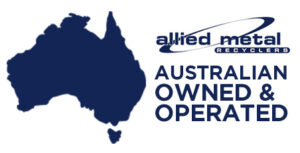It’s in our mobile phones, our water pipes and even in our bodies. But how much about copper do you really know? Sure, it has the symbol Cu and an atomic number of 29. It’s got a reddish-metallic colouring unique among all other types of metals and it’s an excellent conductor of heat and electricity. But all that’s just general knowledge. In fact, there’s a lot more to copper than what meets the eye.
To show you what we mean, here are just a few interesting facts about copper, one of the most valuable materials in the scrap metal market:
1. It was one of the first metals to be worked by man
Ever heard of Ötzi the glacier mummy? Well, thanks to his discovery, we know that the use of copper dates back over 10,000 years ago. Ötzi the Iceman was found in 1991 in the Ötztal Alps, which is located on the border between Austria and Italy. His axe, which was made of 99.7% copper, was found along with him, perfectly preserved. This axe is the only one of its kind in the world, and has provided us with detailed information on how an axe was fashioned back in 3300BCE.
2. It has antibacterial properties
When bacteria, viruses or fungi land on a copper surface, electrically charged ion particles take action. These ion particles inflict damage upon the microbe’s cell membrane or its viral coat, which in turn, destroys the RNA or DNA inside the organism. This is what prevents the harmful microbe from being able to mutate or develop a resistance against the antimicrobial properties of copper. It’s no wonder why copper has been used for medical purposes across so many different cultures throughout history!
3. It’s in the Statue of Liberty
It may come as a surprise to find that the Statue of Liberty is actually made out of copper, considering the fact that it’s blue-green and not, well, copper-coloured. But make no mistake, when the Statue of Liberty was dedicated in 1886 by President Grover Cleveland, it was indeed coated in that signature red-brown copper skin. Due to decades worth of exposure to the harsh elements and weather conditions however, over time, the Statue of Liberty began to develop a ‘patina’, also known as it’s blue-green outer layer.
4. It was named by the Romans
In the past, copper was predominantly mined on Cyprus by the Romans, who first named it ‘aes cyprium’ (metal of Cyprus). The metal’s name was then changed to ‘cuprum’, then ‘coper’ in Old English, before finally being changed to the ‘copper’ we know of today.
5. It’s used in almost every industry
As mentioned previously, copper is one of the most valuable materials in the scrap metal market. Of course, there’s a good reason for this. As an excellent conductor of heat and electricity, copper is ideal for use in cookware, electronics, plumbing, automobiles, you name it. Its diverse application is one of the many reasons why copper is so highly sought after.
6. Recycling copper has many benefits
Copper recycling comes with a myriad of benefits for both society and the environment. First off, this material is 100% recyclable. It can be reused over and over again, making it an incredibly sustainable material. Aside from this, copper also retains up to 90% of it’s original value, making it cheaper for businesses to buy recycled copper over freshly mined ore. Participating in copper recycling reduces the negative effects of irresponsible waste disposal and pollution, whilst also conserving finite resources and energy usage.
Copper is an amazing metal, but it’s also a finite resource. This is exactly why it’s so important to get as much as we can out of pre-existing copper, through choosing to recycle scrap metal instead of sending it out to landfill. At Allied Metal Recyclers, we’re passionate about working to make copper scrap recycling as convenient for you as possible. In this way, we can encourage more businesses to take part in the initiative, whilst also getting cash for scrap along the way!
To arrange for a yard clearance or bin delivery, be sure to contact Allied Metal Recyclers today!



